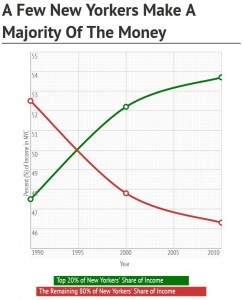Dear Commons Community,
We have heard a lot over the past year about the Common Core curriculum promoted by the U.S. Department of Education and most of the state education departments. What was supposed to be an upgrading of education standards has become a political football that has incurred criticism if not wrath on the part of conservatives, liberals, mothers, teachers, and unions. The Huffington Post has a review of how the Common Core has evolved in an article entitled, “How The Common Core Became Education’s Biggest Bogeyman?” Here are several excerpts:
“Shortly before Thanksgiving, Arne Duncan made a glib remark about the Common Core that quickly blew up.
Speaking before a gathering of state schools chiefs, the secretary of education dismissed growing opposition to the new national set of learning standards, saying “white suburban moms” were rising up against the Core simply because its more rigorous tests meant they were being told “their child isn’t as brilliant as they thought they were.”
The riff wasn’t all that different from Duncan’s usual words of support for the Common Core. He often says states have “dummied down standards” and insists officials need to tell students the truth about just how smart they are. But as soon as he named “white suburban moms” as part of the problem, his refrain became the gaffe heard ’round the mom-blogger world.
The pointed phrasing fed into parents’ bubbling anxiety about the Core, more fully known as the Common Core State Standards Initiative, an education push that aims to make sure students across the United States are learning the skills they need to succeed in a global economy. In recent months, as schools began teaching and testing students on the new standards — and telling families about their plans — what started as an effort by officials to remake American education has become a favored punching bag of pundits and parents alike…
If implemented effectively — that is, if the standards actually reach the classroom and teachers are given the materials, training and support they need — the Core will dramatically change what it means to be a student in American public schools. Its supporters hope it will create more effective teachers and, in the long run, help the U.S. improve its international educational standing after a decade of stagnation. They say this new education paradigm could also be game-changing for the U.S. economy, as American schools begin to teach lessons in sequences similar to those of higher-performing countries around the world, such as Finland and Singapore.
Yet it appears that after three years of relative quiet, the initiative is poised to become a political football, both imperiling its implementation and potentially undermining any good its supporters think it could do. What’s at stake is the classroom experience and outcomes for over 40 million kids, as states and local school districts find themselves caught in the middle of this debate and continue to face troubles transitioning to a complex new system. In New York, the transition has . been so rocky that the state’s teachers union president said this week that he would pursue a no-confidence vote on education commissioner John King over his handling of Common Core implementation…
Detractors across the political spectrum have associated the Common Core with, at various points, “zombies,” “Hitler” and “vampires.” Some Republican officials who helped create the standards are having trouble holding down support as their constituents argue the Core represents yet another way for federal officials to micromanage their lives. Right-wing organizers are channeling this anger into a campaign to take down the Core. Earlier this month, FreedomWorks posted an action plan to fight against the standards, a campaign that will culminate with a march on Washington, D.C., this summer. The American Principles Project plans to spend at least $500,000 on the cause, Politico reported.
Meanwhile, proponents of the Core also face grounded concerns from academics, parents and some left-wing politicians about the true rigor of the standards and the limits they could place on higher-performing students.
New attention to the Common Core is admittedly overdue, and the vitriol perhaps inevitable. In a sense, the initiative was conceived in a political vacuum: The standards were quietly drafted and implemented over the last five years by a relatively small group of experts and officials around the country and with limited public input. This meant the process went fairly smoothly — initially, creators were able to secure the backing of 48 governors, from red and blue states alike.
But in the three years since states began adopting the standards, the political landscape around education has changed to reflect the overall polarization of partisan politics. The Core’s most high-profile supporter, President Barack Obama, was reelected. But during the 2012 campaign, his opponent branded the Core as a federal overreach, pushing Obama to walk a fine line between bragging about it and falling prey to those sensitivities. “We’ve convinced nearly every state in the country to raise their standards for teaching and learning,” Obama said in one debate, but he was careful never to mention the Common Core by name. At the state level, new governors and legislatures took office and found they had inherited their predecessors’ ideas about how to educate their children — ideas they didn’t necessarily agree with…
The fight against the Core is spreading. In November, an upstate New York mother organized a Common Core protest day, asking parents to keep their kids home from school. The Baltimore County teachers union filed a grievance against its board over Common Core implementation. A few months earlier, a Maryland parent was thrown out of a school board meeting for protesting the standards. Tea party groups including the American Principles Project have organized their members against the Core, and conservative radio personality Glenn Beck has called it a product of extreme leftist ideology.”
These critiques puzzle the Core’s proponents. “This whole agenda, the Common Core, is pretty much a Republican agenda,” said Holliday, the schools chief of Kentucky, an Independent. “I find it interesting when some factions of the Republican Party push back so hard on this work.” In early January, Idaho’s Republican Governor Butch Otter pledged to press on with implementing the Core despite the negative response from his base. “It’s the right thing to do,” he said.
But the pushback has led to reflection on the part of some of the Core’s creators. It seems that by not involving enough stakeholders on the front end, they opened themselves up to much of the current criticism. “There should have been a deeper state-level engagement in terms of their communities,” said Minnich, the CCSSO president. “The discussions may not have been deep enough.”
Most Americans weren’t informed about the process as it happened, and they still aren’t. According to a Gallup poll this fall, only 38 percent of the populace had ever heard the term “Common Core State Standards.” Perhaps a more deliberately public debate could have avoided some of the attacks that now threaten to undermine what was meant to be a promising change..”
This article has covered well many of the issues associated with the Common Core. In sum, the Common Core meant well but was very poorly presented to the American people. In addition, its implementation was rushed in many states without enough planning. The push-back against it especially as directed to the U.S. Department of Education is justified.
Tony




